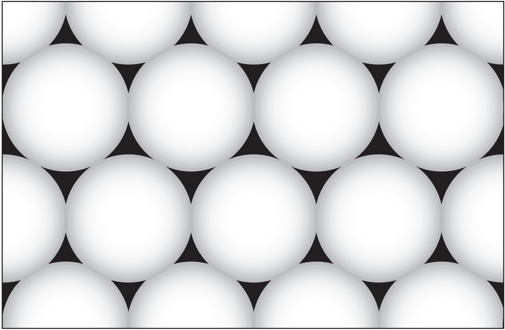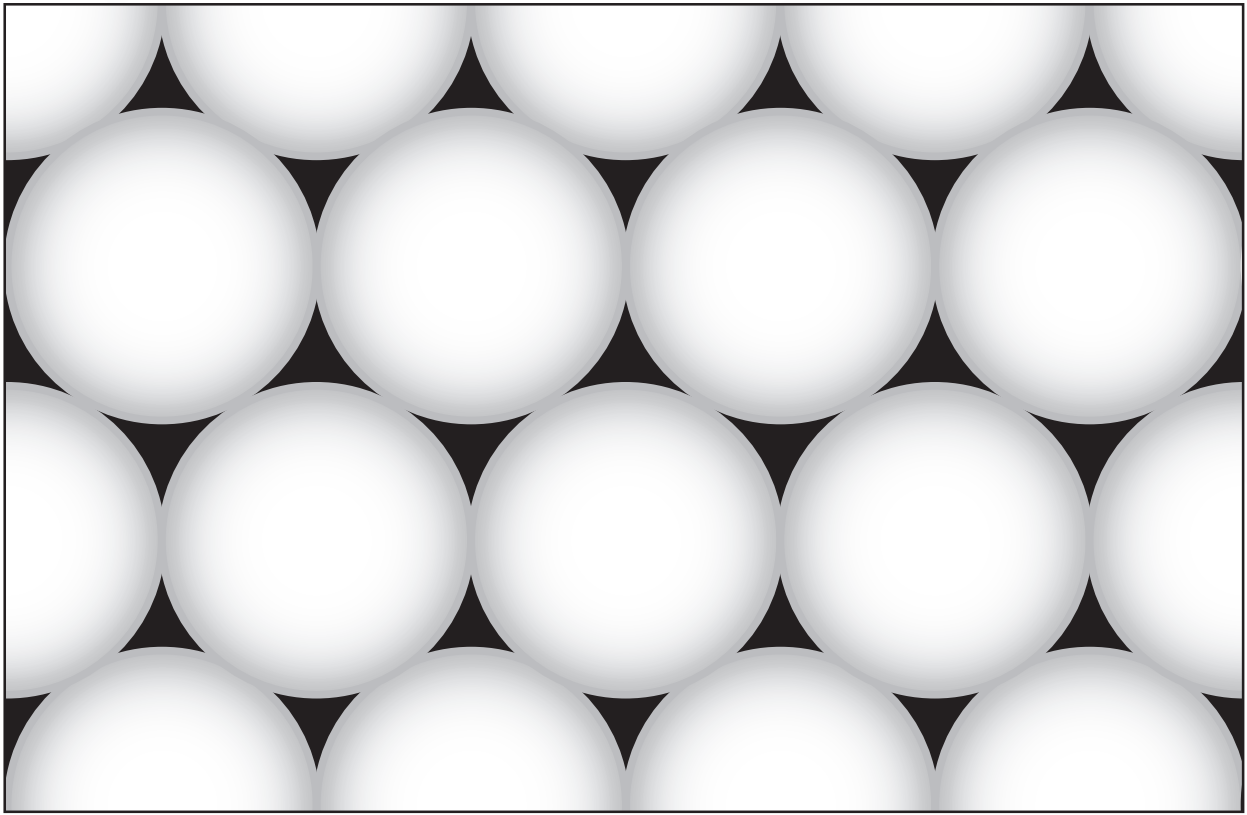
What is frit volume?
The term “frit volume” refers to the volume of the various fluid pathways that comprise the matrix of a frit. A standard frit is a type of porous filter that is manufactured from individual spherical particles, fused together through a controlled process of compression and heat. Because of the shape of the original particles, there are gaps between the fused particles. Fluid makes its way through these gaps, creating a pathway from one side of the frit to the other. The image below aims to illustrate this, where the white circles represent the frit particles, and the black area represents the void between the particles.
Generally, when the frit particles increase in size, the porosity of the frit increases as well. The larger the particles, the larger the gaps between particles. Cumulatively, these gaps comprise what is known as “frit volume.” Using gravimetric determination, it has been experimentally shown that the total volume of any given frit may range from 18%–30%, depending upon the porosity of the frit.
Frit volume is calculated by determining what the mass of the frit would be if it were a solid block of material of equal size. Then the solid mass of the frit is multiplied by the percentage assigned to the porosity to determine the theoretical frit volume.
- 20% for 0.5 µm frits
- 24% for 2 µm frits
- 26% for 5 µm frits
- 28% for 10 µm frits
- 30% for 20 µm frits
From a liquid chromatography perspective, it’s important to know the volume of the frit used in your system. This is because a frit may negatively impact your chromatographic separation if the total frit volume is too large and if it is placed in an area through which the sample will pass. To avoid frit-related problems like band broadening and loss of resolution, most inline filters placed after the sample introduction point (e.g., between the injection valve and the column) are smaller in size and with a smaller porosity than inline filters that are placed in areas before the sample is introduced into the flow path (e.g., between the pump and the injection valve).
Biotech Fluidics provides a wide range of different frits, with a variety of frit volumes, for numerous filtration purposes in liquid chromatography (HPLC & UHPLC) and other fluidic systems. Browse through our comprehensive product program to learn more and find a suitable type of frit for your fluidic path, or contact Biotech Fluidics for guidance to what options would be most suitable for your particular setup.


